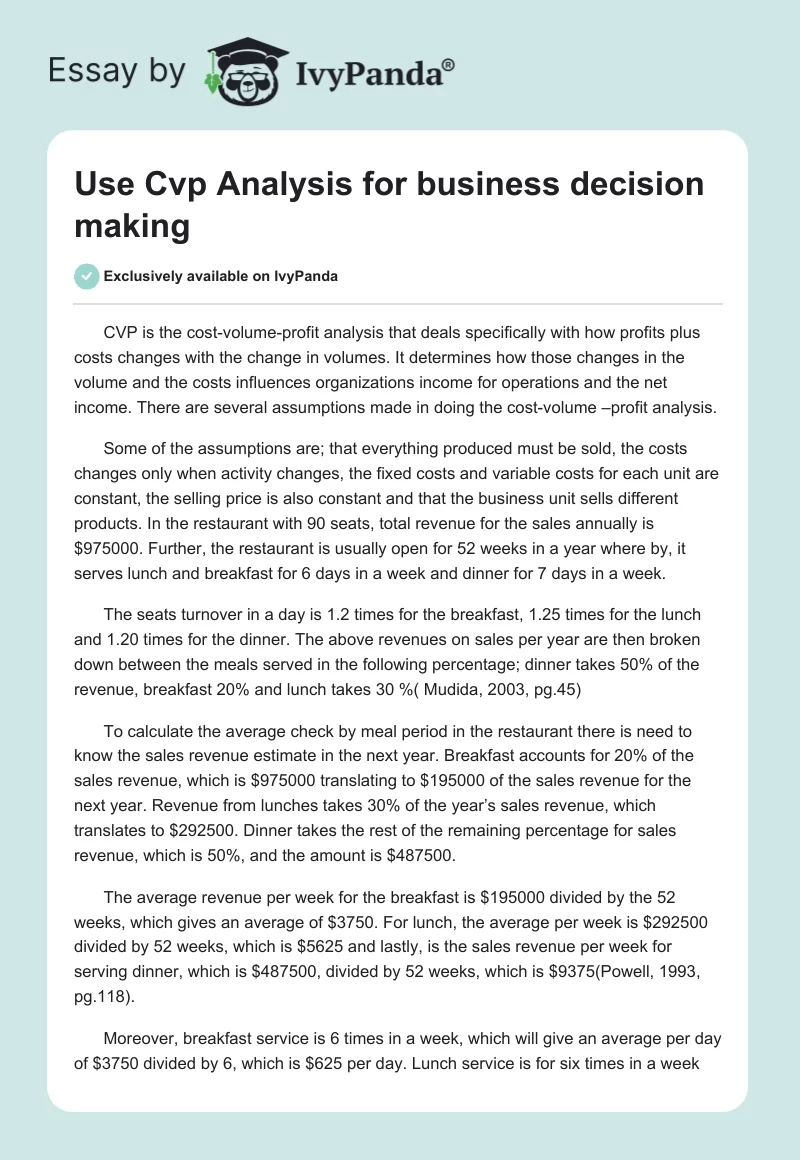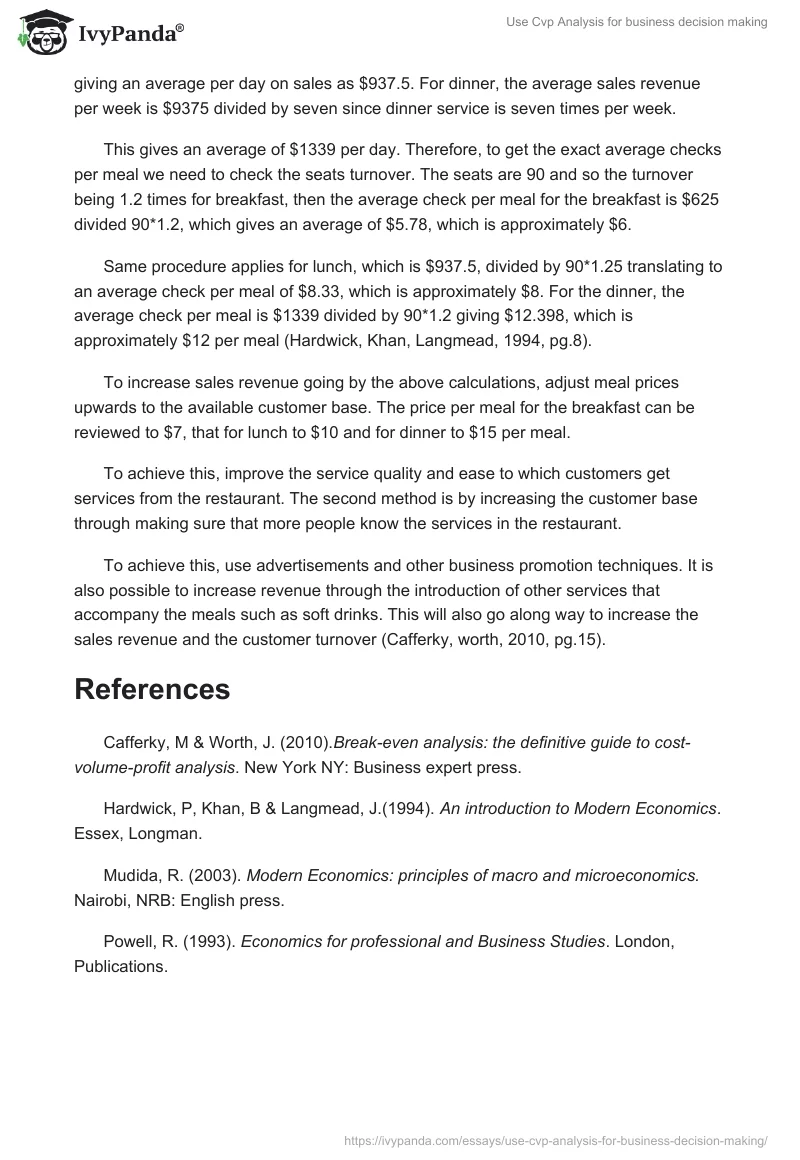CVP is the cost-volume-profit analysis that deals specifically with how profits plus costs changes with the change in volumes. It determines how those changes in the volume and the costs influences organizations income for operations and the net income. There are several assumptions made in doing the cost-volume –profit analysis.
Some of the assumptions are; that everything produced must be sold, the costs changes only when activity changes, the fixed costs and variable costs for each unit are constant, the selling price is also constant and that the business unit sells different products. In the restaurant with 90 seats, total revenue for the sales annually is $975000. Further, the restaurant is usually open for 52 weeks in a year where by, it serves lunch and breakfast for 6 days in a week and dinner for 7 days in a week.
The seats turnover in a day is 1.2 times for the breakfast, 1.25 times for the lunch and 1.20 times for the dinner. The above revenues on sales per year are then broken down between the meals served in the following percentage; dinner takes 50% of the revenue, breakfast 20% and lunch takes 30 %( Mudida, 2003, pg.45)
To calculate the average check by meal period in the restaurant there is need to know the sales revenue estimate in the next year. Breakfast accounts for 20% of the sales revenue, which is $975000 translating to $195000 of the sales revenue for the next year. Revenue from lunches takes 30% of the year’s sales revenue, which translates to $292500. Dinner takes the rest of the remaining percentage for sales revenue, which is 50%, and the amount is $487500.
The average revenue per week for the breakfast is $195000 divided by the 52 weeks, which gives an average of $3750. For lunch, the average per week is $292500 divided by 52 weeks, which is $5625 and lastly, is the sales revenue per week for serving dinner, which is $487500, divided by 52 weeks, which is $9375(Powell, 1993, pg.118).
Moreover, breakfast service is 6 times in a week, which will give an average per day of $3750 divided by 6, which is $625 per day. Lunch service is for six times in a week giving an average per day on sales as $937.5. For dinner, the average sales revenue per week is $9375 divided by seven since dinner service is seven times per week.
This gives an average of $1339 per day. Therefore, to get the exact average checks per meal we need to check the seats turnover. The seats are 90 and so the turnover being 1.2 times for breakfast, then the average check per meal for the breakfast is $625 divided 90*1.2, which gives an average of $5.78, which is approximately $6.
Same procedure applies for lunch, which is $937.5, divided by 90*1.25 translating to an average check per meal of $8.33, which is approximately $8. For the dinner, the average check per meal is $1339 divided by 90*1.2 giving $12.398, which is approximately $12 per meal (Hardwick, Khan, Langmead, 1994, pg.8).
To increase sales revenue going by the above calculations, adjust meal prices upwards to the available customer base. The price per meal for the breakfast can be reviewed to $7, that for lunch to $10 and for dinner to $15 per meal.
To achieve this, improve the service quality and ease to which customers get services from the restaurant. The second method is by increasing the customer base through making sure that more people know the services in the restaurant.
To achieve this, use advertisements and other business promotion techniques. It is also possible to increase revenue through the introduction of other services that accompany the meals such as soft drinks. This will also go along way to increase the sales revenue and the customer turnover (Cafferky, worth, 2010, pg.15).
References
Cafferky, M & Worth, J. (2010).Break-even analysis: the definitive guide to cost-volume-profit analysis. New York NY: Business expert press.
Hardwick, P, Khan, B & Langmead, J.(1994). An introduction to Modern Economics. Essex, Longman.
Mudida, R. (2003). Modern Economics: principles of macro and microeconomics. Nairobi, NRB: English press.
Powell, R. (1993). Economics for professional and Business Studies. London, Publications.


